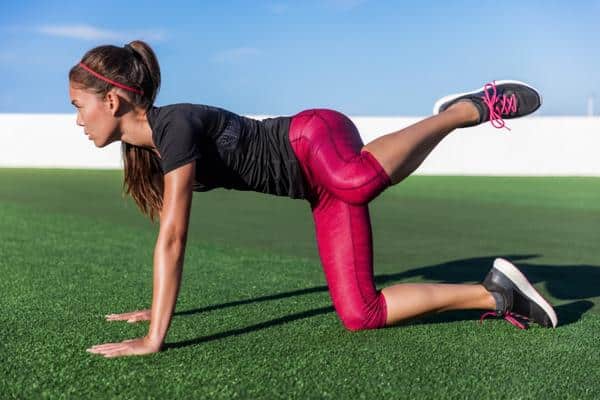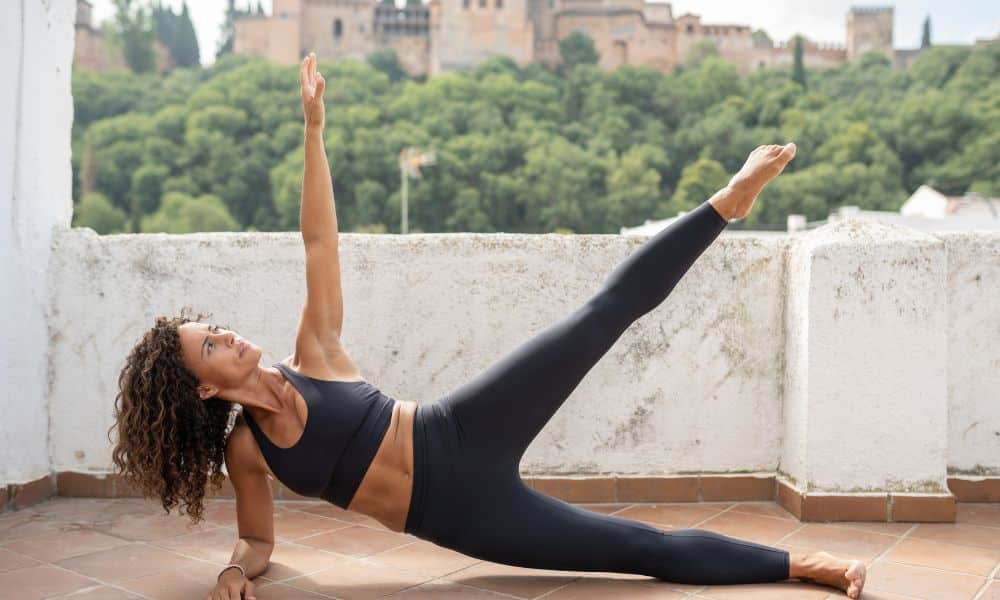Are you looking to learn more about the fire hydrant exercise to become more athletic by improving your mobility? The fire hydrant uses body weight to strengthen the flexors and improve mobility. Thus, this exercise mainly works out the hips and butt muscles.
Did you know that your butt and hips are some of the most powerful muscles in your body? The fire hydrant focuses on toning these muscles and improving their performance. Also, bringing some variations to the fire hydrant exercise will target the core.
When performed correctly, the hydrant will sculpt your butt and hips. Who doesn’t want a sexy butt? And powerful hip muscles are great for a sudden change of direction when playing basketball, golf, football, soccer, or boxing.
Also, it will lower the risk of injury and back pain. This article will discuss fire hydrant exercise and how to use it to improve mobility. Also, we will discuss how to perform the movement and the variations you can do.
How do you perform the fire hydrant exercise?
It is vital to use the correct form for any exercise. You can use this technique to get the most from the fire hydrant exercise. A fire hydrant is a bodyweight activity, so you don’t need special equipment. You only require a mat. Body weight exercises are great for making you more athletic.
Also, they are cost and time-efficient. You can perform the fire hydrant almost anywhere. So drop and give me a fire hydrant! We call it the fire hydrant because the exercise reminds us of a dog peeing on a fire hydrant. You guessed it; you do not play the role of the fire hydrant but the dog.
- Start by getting down on all fours like a dog.
- Ensure the palm of your hands, knees, and toes touch the mat.
- Also, keep the hips above the knees.
- Constrict your core as you look down.
- Keep the arms straight, and your elbows lock.
- Now lift your right leg away from your body to a 90-degree angle
- For beginners, do a 45-degree angle
- Be sure to keep your knees at a right angle
- Lower the leg to the initial position for completing one rep
- Do at least three sets of 10 repetitions
- Do the same with the left leg.
What Are Some Variations of the Fire Hydrant Exercise?
The most important thing is to keep your pelvis and core stable when performing a fire hydrant. Move your hips to perform this exercise correctly. When performing variations of the fire hydrant, try pointing your foot to the wall. Also, keep your abdominal and core muscles tight during the exercise.
The fire hydrant and its variations improve balance, endurance, strength, and agility. Therefore, you want to keep your spine neutral. Also, balance your left and right hands. Please make sure not to lean over to either side.
To perform a fire hydrant, keep your elbows straight. Don’t sway your hips or torso towards the side as you lift your leg. This movement should originate from the hips. Also, you will use your butt as you move. The fire hydrant is about controlled power. Permanently activate and squeeze your glutes. Here are some variations to the fire hydrant exercise to include in your workout:
Resistance Bands –
Fire hydrant exercise is doable with resistance bands around your legs. The band will keep your thighs and hips working together. However, resistance bands add difficulty, dramatically improving the hip’s strength and mobility. Also, you need to wear a band above your knees.
Ankle Weights –
You can challenge your legs and glutes by using ankle weights. Start using a low weight if you haven’t used ankle weights before. You may increase the weights as you get stronger. Using ankle weights changes a bodyweight exercise into a weightlifting exercise.
Kick –
You can intensify the move by adding a kick to your fire hydrant. It will help you strengthen the hip muscles. Kicks allow you to change an isometric exercise into an isotonic exercise. Here are a few safety tips when performing the kick fire hydrant:
- Straighten your knee to extend your entire leg.
- Go back slowly to 90 degrees.
- Lower the leg to finish one rep.
- As you kick, keep your leg straight.
- Keeping your leg straight will help you work the glutes.
Pulse –
You can also add pulses to change up the fire hydrants exercise. The vibration is between the kick and a standard fire hydrant for the difficulty level. Most people start with a regular fire hydrant and then move to a pulse before eventually doing a kick fire hydrant. Here are a few safety tips when performing the pulse fire hydrant:
- Pulse about three to five times as you lift your leg slowly
- Lower the leg to complete one rep
- Increase your pulse reps as you get stronger
Standing –
The standing fire hydrant helps to strengthen the hips, core, and glutes. However, these involve some hip activities. In addition, the upright fire hydrant does not apply weight to the wrist and shoulders. Thus, this exercise is excellent for those with wrist or shoulder problems.
- Place your hands on the posterior side of your chair
- Stand with the legs apart at a hip-width
- Bend your left leg to perpendicular angles
- Lean your core in front of you
- Now squeeze the core
- Lift the leg to an angle of 45 degrees
- Don’t move any other body part
- Lower the leg to the initial position
- Complete three sets of at least ten reps
- Now repeat the exercise with the other leg
- Add a resistance band to the training to intensify the move
Common Mistakes –
A common mistake is leaning over or twisting the torso when lifting the legs. It is a common problem with flexible individuals. Instead, keep the balanced pressure on the left and right hands. Also, make sure the torso and hips are as stable.
Finally, try isolating the movement to just a single leg. Another common mistake is rushing through the exercise to perform more reps. The reps that count are the ones you do correctly. Also, the goal is not to do a fire hydrant but to improve your fitness.
Thus, it doesn’t matter how many you do. The only thing that matters is improving your mobility. Therefore, slow down and use the mind to muscle connect to perform the exercise correctly. And yes, you will do fewer reps when you complete the training correctly.
Finally, don’t try bending at the elbow to twist the torso to counteract the below-average flexibility of the hips. Instead, keep your elbows locked out, and try straightening your arms. If you have lesser extension and flexion, focus on moving your leg as high as possible. Also, with time, you will improve.
Secondary Muscles –
The fire hydrant exercise targets your hip muscles. However, the fire hydrant is also helpful for strengthening your core and abdominal muscles. You can improve hip extension, external hip rotation, and hip abduction. Thus, you can use exercise variations to target your thigh muscles. You can do so with resistance bands, kicks, and pulses.
The Last Word on How to Improve Your Mobility with the Fire Hydrant Exercise
The fire hydrant exercise is excellent for improving your mobility and athleticism. Your hips are essential when performing sports. Unfortunately, hip injury is one of the most prominent injuries in older people. Doctors make a lot of money from hip replacements. Not only does the hip improve your balance and agility, but it also affects your mobility.
Therefore, if you play sports or as you get older, you need to consider the health of your hips. For example, Bo Jackson, one of the greatest two-sport athletes in American history, cut his career short because of a hip injury. Also, your hips play a secondary role in performing the squat and deadlift.
The main thing you need to know about the fire hydrant is that it improves the hip, one of the most important muscles. In addition, it is a perfect exercise for improving the legs, butt, and core muscles. Finally, combine the fire hydrant with isometric exercises, cardio, and resistance training for the best results.




